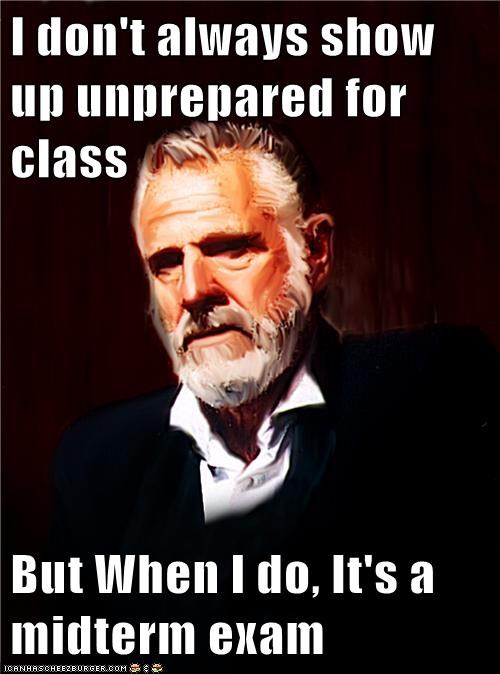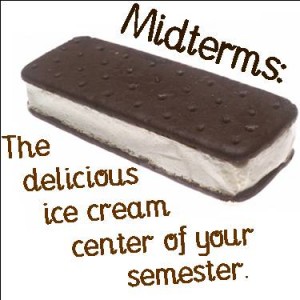|
|
LITR 4333
American Immigrant Literature
Monday, 7 October 2013 |
|
(This webpage is the assignment for our course's first midterm. This page will be updated and refined up to 30 September.)
Two parts to Midterm1:
-
Essay comparing and contrasting immigrant and minority narratives and cultures. (At least 7 paragraphs.)
-
Research proposal (for Research Report on Final Exam) (with update on Midterm 2) (At least 2 paragraphs.)
Format: in-class or email
-
No regular class meeting on 7 October but classroom available for students who want to write exam in-class; instructor keeps office hours 7-10.
-
Email exams due to whitec@uhcl.edu by 9pm Tuesday, 8 October. "Submission window" is 31 September-8 October.
Confer with instructor or Writing Center any time regarding either part of your midterm: Office: Bayou 2529-7; Phone: 281 283 3380; Email: whitec@uhcl.edu
![]()
Part 1. Essay (90-120 minutes, 7+ paragraphs) describing the immigrant narrative in comparison and contrast with the minority narrative.
-
Using examples from readings, presentations, and discussions, compare and contrast the immigrant and minority narratives as cultural narratives. How do immigrants' and minorities' stories respond differently to their peoples' histories relative to the USA? Where do the two narratives and cultures converge and diverge?
-
Refer to Objectives 1-3 (at bottom of syllabus / homepage).
-
Try also to discuss and cite examples of "Model Minority" immigrants and the Dominant culture. For instance, how do Immigrant and Minority cultures relate differently to the dominant culture? Where do "Model Minority" immigrants fit relative to immigrants, minorities, and dominant cultures?
-
Compare the immigrant and minority narratives also as stories that interest, confirm, or challenge their audience. What different aesthetic appeals do the two kinds of narratives make? What different purposes do readers find in them? How do readers—regardless of their particular ethnic identity—identify with these stories or not?
Special requirements / options:
-
Required: Somewhere in your essay, make a reference to one or more previous midterms from this course's Model Assignments.
-
Required: references to course objectives 1-3 including terms, plus or minus other objectives.
-
Optional: personal references: Not required, but you may refer to your own backgrounds, previous knowledge, and interpretations of the materials. Relate all such materials to the assignment or objectives.
Textual requirements: Refer to 6+ texts from course readings—either daily assigned readings, poems presented, or texts (e.g., Crevecoeur) on course webpage.
- Of the 6 required texts, 2-3 should
exemplify the immigrant narrative and 2-3 should exemplify the minority
narrative.
- Of the 6 texts, at least four
should be prose pieces from Imagining America, fiction or nonfiction handouts
or webpage texts. Two texts may be poems presented, or use all prose texts
if preferred.
- Welcome to refer to quotes or ideas from earlier midterms on the Model Assignments, but the Web Review part of our midterm makes this optional.
![]()
Texts available for essay
Immigrant texts (select at least 2)
-
Immigrant fiction and nonfiction: Anzia Yezierska, “Soap and Water”; Nicholasa Mohr, “The English Lesson” (IA 21-34); Sui Sin Far, "In the Land of the Free" (IA 3-11); Gish Jen, “In the American Society” (IA 158-171);
-
Immigrant poetry: Joseph Papaleo, “American Dream: First Report”;
Minority texts (select at least 2)
-
Minority fiction and nonfiction: Narrative of Olaudah Equiano, The African; Toni Cade Bambara, “The Lesson” (IA 145-152); Alice Walker, “Elethia” (IA 307-309; Handsome Lake, How the White Man Came to America; Leslie Marmon Silko, “The Man to Send Rain Clouds” (IA 205-209); Louise Erdrich, "American Horse" (IA 210-220); Mei Mei Evans, “Gussuk” (IA 237-251)
-
Minority poetry: Patricia Smith, “Blonde White Women” ; Chrystos, “I Have Not Signed a Treaty with the United States Government"
![]()
Part 2. Write a proposal for your Research Report topic (to be developed in Midterm2 and completed as part of final exam).
Assignment: Write 3-5 sentences identifying your probable topic for a research report. Why did you choose this topic? What do you want to learn? How? Indicate what you already know.
If you're stuck between 2-3 subjects, describe situation--instructor will help guide.
Remember you can change your subject, or your subject can evolve as you do research. If your subject changes completely, clear with instructor. If your subject evolves but stays more or less the same, no need to clear with instructor--but you could write about how your subject changed as part of your research report. (That is, how your subject changes can be part of the learning experience you describe.)
Range of subjects: You have considerable freedom to choose, but anyone reading your proposal should immediately recognize its relevance to a class on immigrant literature and multicultural identity.
Warning: The only recurrent mistakes made last time were that some students proposed pure Minority topics that didn’t have anything to do with immigration or the immigrant narrative. This course doesn’t exclude Minority Literature, but such a topic is more appropriate for our American Minority Literature course. You can involve Minority identities and narratives, but they must relate to Immigrant literature or identity in some direct and obvious way.
Possibilities for topics:
- Literature of an immigrant group—e.
g. Chinese-American, Mexican-American, Turkish-American.
- History of a particular immigrant
group and / or some literary or cultural movements associated with them.
- An immigrant or ethnic group that
mixes immigrant and minority traditions, e. g. Haitians, Jamaicans, or other
Afro-Caribbeans; Dominicans; Mexican Americans?
- Literature associated with a
particular immigrant writer, e. g. Gish Jen, Frank McCourt, Henry Roth,
Anzia Yezierska. (Career review + bibliography of major
writings.)
- Another
immigrant-literature-related topic, perhaps of a more formal literary nature
focusing on narrative, language issues, publishing challenges, etc.
- The main thing is for you to choose a
topic you care about and want to learn about and share.
- To get a sense of this report’s possibilities is to look at previous models on Model Assignments.
Response to Research Proposal
- When email submitting your midterm is
received, instructor will directly read your proposal and offer a response.
- Student does not receive an
announced letter grade for the proposal, only a “yes” or instructions for
receiving a yes, plus . Students don't lose credit for problems reaching a
topic as long as they are working on it.
- The only way to get in trouble over proposal is if you simply don’t offer much
to work with, especially after prompts from instructor. A bad
proposal is one sentence starting, “I’m thinking about . . . ” and
ending “ . . . something to do with immigration and gender.” Then, “What do you think?” In these cases, a bad grade isn’t
recorded, but notes regarding the paper proposal may appear on the Final
Grade Report.
- In other words, a few students obviously don't think about this topic until the last minute when the midterm is due. Instructor can't act like that's cool.
Instructor welcomes inquiries on possible topics before Midterm 1. Email, phone, confer in person.
Future developments:
Midterm 2: 4-5 paragraphs describing your research and learning so far on your topic and how it relates to American Immigrant Literature.
Final Exam: 8-10 paragraph report summarizing your research and learning on your topic and how it relates to our course.
![]()
Further instructions on format / submission:
Write in Word or Rich Text Format file; attach and paste into email message to whitec@uhcl.edu (or reply to my email)
You may take breaks and write the midterm's 3 parts in installments plus review and revision.
Advance preparations:
Complete your Research Report Proposal ahead of time and submit it with the rest of your midterm or compose it while writing your exam.
After finishing but before submitting your exam:
Take a break, review objectives; edit essay and report, add examples and use course terms.
Guides for anticipating grading and comments:
-
Surface competence / readability: An occasional careless error won't kill your grade, given time pressures, but repeated or chronic errors are remarked and factored. If you have trouble with spelling, word endings, punctuation, etc., get help from a mentor or tutor (ask them to explain help).
-
Content: Use, explain, and apply course terms; refer frequently to objectives and texts.
-
Thematic organization: emphasize central themes of your essay. Connect parts of essay to form a unified whole. Use transitions. Organize paragraphs with topic sentences. (Helpful websites: unity, continuity, and transition; Thesis, topic sentences, transition.)
The best exams use terms, themes, and objectives recognizable from class meetings, demonstrate understanding of terms and objectives with quick working definitions and application to examples from texts, while also extending and refreshing common materials with the student's own language, examples, and analyses of shared texts.
Lesser exams talk about the texts but ignore terms and objectives. Students write what they would have said before starting the course. Instructor replies, "You could have written this without taking the course." Don't make me write this!

revise for more on origins of two groups


